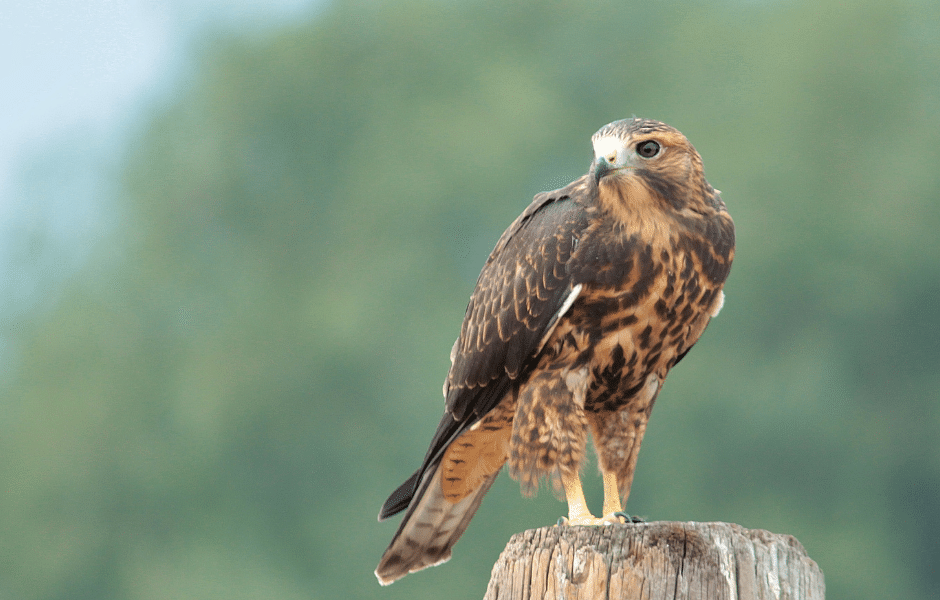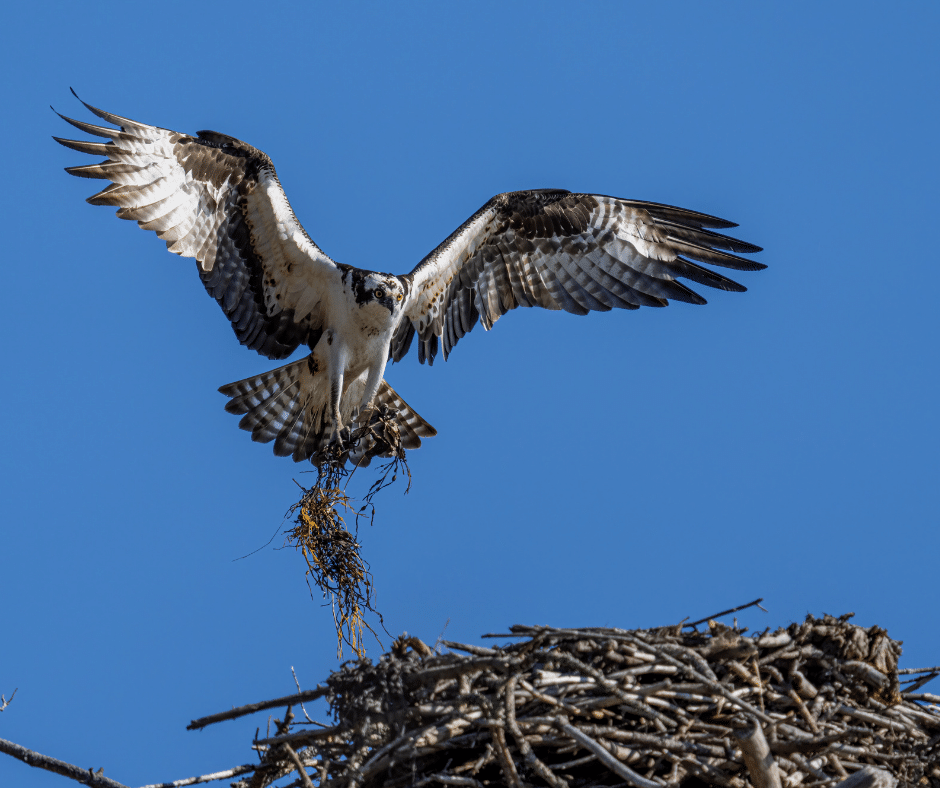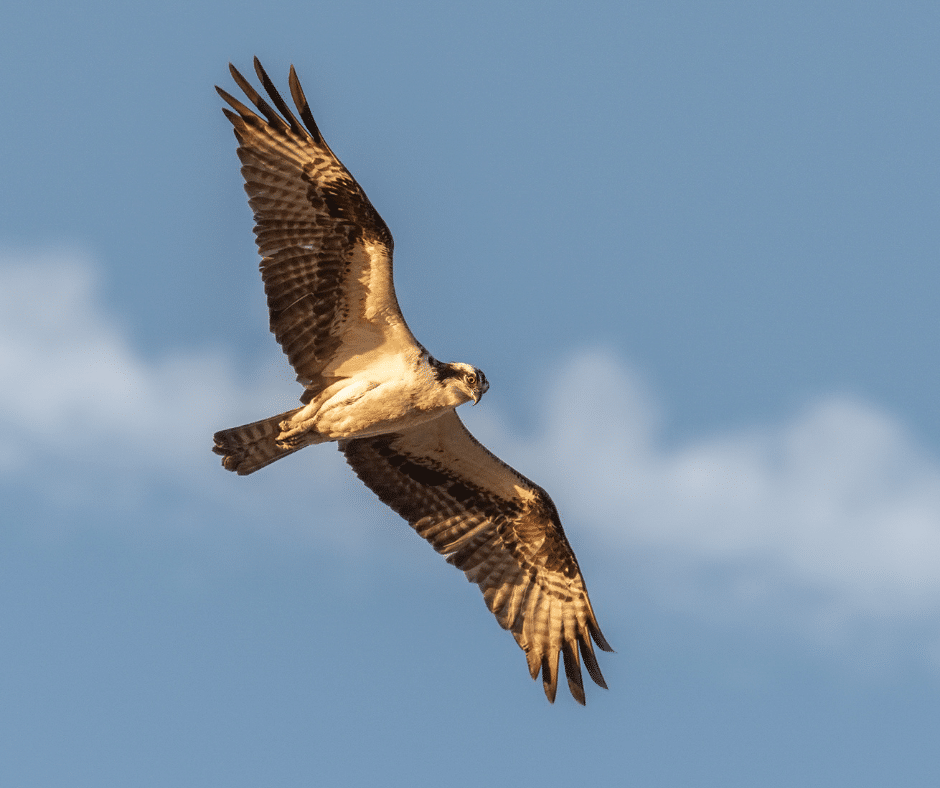
Learning to Identify the Seven Species of Hawks in Florida
With a beautifully warm and humid climate on the Gulf Coast, Florida is an excellent nesting place for all birds of prey. Hawks are no exception. In fact, there are several types of Hawks in the state that enjoy the vast woodlands, wildlife refuges, wetlands, swamps, agricultural fields, and more.
Seven species call Florida home, but the two main types of hawks are of the genus buteo an accipiter.
Dictionary.com defines each as the following.
Buteo:“any of several buzzards or hawks.”
Accipiter: “having short, rounded wings and a long tail and feeding chiefly on small mammals and birds.”
Learn more about the seven species of hawks found in Florida and their descriptions here, with World Class Wildlife Removal.
The Seven Species of Hawks in Florida
Hawks are one of the most intriguing birds. As diurnal (active in the daytime) birds, they all may have keen eyesight, taloned feet, and hooked beaks. But there is great variety within the different types of hawks.
Make no mistake; hawks are solid and robust with talons and beaks that help them rip apart their prey. They are also tremendous fliers that have been timed at over 150 mph when they are diving for their prey.
Fun Fact: Like humans, awk can see in color!
Here are the hawks you may catch a glimpse of in Florida.
Red-Shouldered Hawk
buteos
Length: 16.9-24.0 in
Weight: 17.1-27.3 oz
Wingspan: 37.0-43.7 in
The red-shouldered hawk lives in areas full of forests and water sources like rivers and swamps. This hawk is easy to spot for more than one reason. They are whistle callers that sound like “kee-yrrr,” and they are found circling open grounds. And they are medium-sized hawks with sturdy bodies and iconic broad, rounded wings. Furthermore, their wingtips are translucent, setting them apart from other hawks. The red-shouldered hawk boasts stunning rusty-red plumage on their backs and chest with dark brown and white checked wings.
Fun Fact: Did you know the red-shouldered hawks are monogamous breeders?
Red-Tailed Hawk
buteos
Length: 17.7-25.6 in
Weight: 24.3-51.5 oz
Wingspan: 44.9-52.4 in
The red-tailed hawk is the second largest of Florida’s hawks. They have pale underbodies, and the upper feathers and tail feathers are a warm, brick red. Red-tailed hawks are both abundant and are actually quite common to see in Florida. Majestically, they circle above open fields with optimal high perching spots. And they look for reptiles, rabbits, and mice for a meal.
Fun Fact: Their broad and short tails set them apart from other hawks.
Short-Tailed Hawk
Buteos
Length: 16 in
Weight: 14-20 oz
Wingspan: 35 in
Surprisingly there is very little information on the short-tailed hawk. These hawks have not been widely studied, so there is very little to know. They are somewhat elusive and can only be spotted in Florida near the southern tip of the Keys. They are believed to eat smaller birds primarily and some small rodents. However, they must have short tails, right?
Cooper’s Hawk
accipiter
Length: 14.6-17.7 in
Weight: 7.8-24.0 oz
Wingspan: 24.4-35.4 in
This hawk is a blueish grey in color with short wings and a long tail. Their cheeks are a pale color, and they have a black cap. Additionally, the Coopers hawk has a small bill that is strongly hooked. And they prey on robins and jays in mature forests.
Fun Fact: Cooper’s Hawks have an unusual flight pattern where they will beat their wings several times, and then they glide. Consequently, they are often called the “blue darter.”
Sharp-Shinned Hawk
accipiter
Length: 9.4-13.4 in
Weight: 3.1-7.7 oz
Wingspan: 16.9-22.1 in
This accipiter hawk is much like the Cooper’s Hawk but is smaller and less abundant. They have a similar appearance and are often called “Sharpies.” They are called sharp-shinned due to the thin raised ridge along the leg bone where the shin would be if they had one. Sharp-shinned hawks will search for sparrows, robins, and other songbirds.
Northern Harrier
harrier
Length: 18.1-19.7 in
Weight: 10.6-26.5 oz
Wingspan: 40.2-46.5 in
As the only member of the harrier genus in North America, Northern Harriers have broad wings and long rounded tails. Also, their faces look more like an owl’s face than a typical hawk’s face.
Northern Harriers have keenly sensitive hearing that helps find mice and voles hiding in the forests. Both males and females have black-banned tails and a bright white blotch near the rear of the tail. However, the males are grey and white, and the females are brown. Avid birdwatchers locate these hawks in marshes, grasslands, prairies, and fields as they fly with their wings held in a V-shape.
Fun Fact: The Northern Harrier is much like an owl of Florida as they rely on their hearing and vision to hunt.
Broad-Winged Hawk
buteos
Length: 13.4- 17.3 in
Weight: 9.3-19.8 oz
Wingspan: 31.9-39.4 in
Broad-winged hawks are the smallest of the buteos genus. They have reddish-brown feathers on their heads and pale under feathers with barring. Then their tales have black and white bars. Count yourself lucky if you have the chance to see this hawk dive straight down to catch its prey, as they tend to stay out of sight most of the time.

When a Hawk Perches in Your Yard
Did you know that hawks are excellent critter control for farms and large properties? It is true. They eat those pesky mice and rats that try to enter our homes and demolish crops. It is a whole different story if you happen to have a toy-sized dog or just plain don’t want the hawk there. Getting rid of hawks can be tricky. Rarely will a hawk build its nest in a tree close to people. But there is not much danger to be concerned with if they do.
So, if you have a toy-sized dog, you may want to be outside when the pup is out there. Other than that, these hawks may well be helping you with your underlying rodent problem.
Perhaps you still want the hawk to go away. In that case, make sure you do not have a rodent issue. World Class Wildlife Removal experts can show you how to keep rodents off your property and more.
Prevent Hawks from Nesting on Your Property
Although most birds are entertaining to watch, nurturing, and beautiful, there is only so much a homeowner can take. Birds of prey may be stunning to watch in flight, but of course, you do not want them lurking around your property.
Here are a few suggestions to keep hawks from taking a branch in your tree.
- Remove bird baths and feeders, keeping them 30 feet from your house. Small birds bathing is a prime food source for hawks.
- Large pets in the yard and around the home help keep the birds away.
- Reflective gazing balls and mirrored pinwheels also keep the birds away.
- Use humane bird spikes on the nesting spots, like the rounded tip spikes.
- Install a metal mesh to block chimney holes, dryer vents, and pipe fittings, so the birds cannot nest there and cause further damage.
- Get all the rodents out of your yard. No scurrying meals equal no hawks.
- Hire a qualified wildlife removal company to rid your property of unwanted rodents and small meals for the hawks in your area.

World Class Wildlife Removal Deters Hawks in Florida
Do you have a hawk issue on your property? If so, you probably have a rodent issue too. World Class Wildlife Removal is here for all your wildlife removal needs. We use safe and humane methods whenever possible and abide by the local wildlife laws. Our team of expertly trained specialists is ready to help you reclaim your home and property when unwanted guests invade.
Each day we remove nests and critters of all sorts from Florida homes. There is just about nothing we have not seen or removed. And suppose the animal is endangered or protected. In that case, we can relocate the critter to a shelter or state-approved area for rehabilitation and relocation.
Click here for a free inspection with our expert team of wildlife removal specialists. World Class Wildlife Removal will be there right away for all your pest removal needs.
Join World Class Wildlife Removal to Learn About Hawks in Florida
Should you find a family of rodents or an inhabited or troublesome nest, call the World Class Wildlife Removal professionals to determine the best thing to do. You can count on the World Class team to assess the infestation, remove the critters, birds, rodents, and nests, clean up the area, and prevent birds from returning.
World Class Wildlife Removal is a top-rated local family-owned, full-service wildlife trapping, removal, and repair service. We can remove a rat infestation before it becomes an extensive problem for you and your family.
Contact World Class Wildlife for all your wildlife removal needs today.
